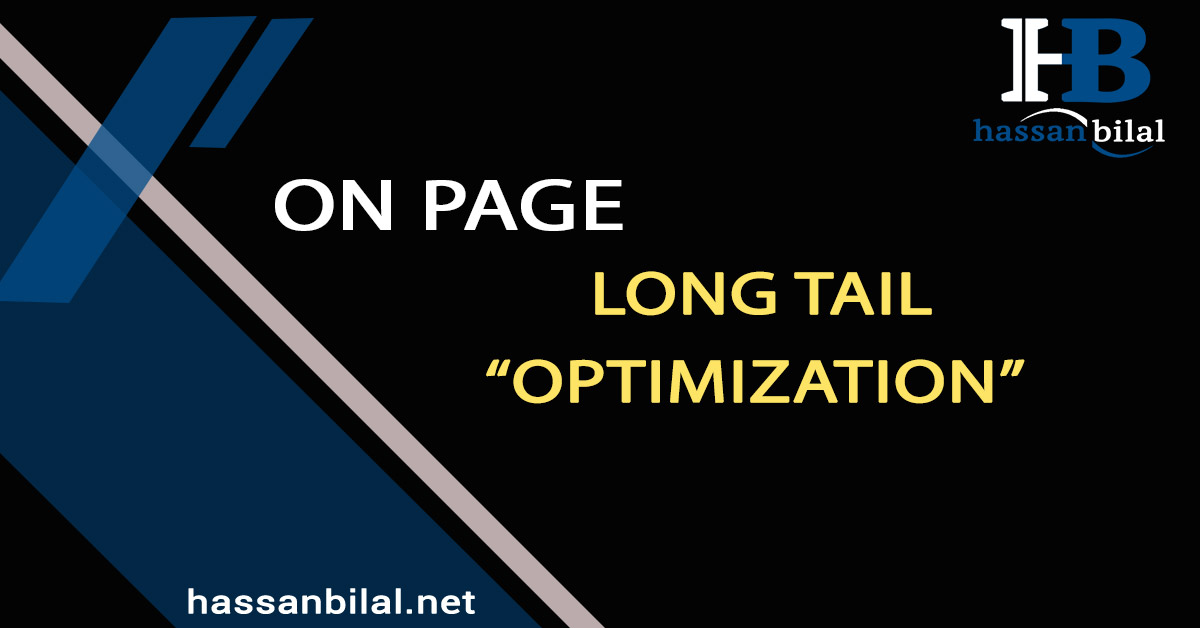ON PAGE SEO
ON PAGE OPTIMIZATION | LONG TAIL OPTIMIZATION

Long tail initially describes a niche strategy in online marketing. This strategy takes advantage of the fact that a large part of the product demand relates to niche products . With the sale of a large number of niche products, however, a profit can still be made because the Internet enables these products to be offered at lower costs than in the conventional market.
The term ” long tail ” is derived from the distribution curve, which is characterized by a steep course, which is then followed by a long, flat end, the “tail”. Search queries on the Internet are analogous to the sales of niche products described above. Here, many of the terms searched for do not relate to the top keywords that are normally optimized for. About a quarter of all search queries are unique (see Fischerländer, Stefan: Keyword research in the long tail. In: Website Boosting – Das Magazin, issue 07/08 2010, page 28). For example, there will be many electrical appliance retailers who optimize their website for terms like “clothes dryer”. AAn example of a long-tail keyword in this area would then be “AEG circulating air dryer used energy-efficient”.
The pattern shown corresponds to the Pareto principle . Pareto was an Italian engineer and economist whose work found its way into many areas of economics. The Pareto principle basically states that around 80 percent of the population is always concentrated on 20 percent of the characteristics. Pareto showed this on the basis of the distribution of national wealth in Italy and showed that 20 percent of the population own 80 percent of the wealth.
If you apply this principle to searches on the Internet, around 80 percent of the search queries relate to 20 percent of the keywords. The remaining 20 percent of the search queries are spread over a large number of different terms that are in the long tail are located.
Use long tail?
This distribution shows the great potential that is hidden in the long tail . One advantage of these mostly specific search queries is that in many cases they come from already informed users. To stay with the above example: If you are not looking for tumble dryers in general, but for a specific device, you are much closer to the purchase decision and are more likely to become a paying customer.
There are also hardly any websites that are optimized for terms from the long tail . So it should be pretty easy to get a good position in the search engine ranking for these keywords. The problem should also be mentioned at the same time: The individual keywords in the long tailwill not lead to many search results – each in and of itself. It is therefore necessary to decide whether individual terms offer a high sales potential in themselves, or whether a mass strategy is chosen to optimize as many of the terms as possible. But first of all, the question arises of how to get the right keywords at all.
How do you get long-tail keywords?
If you already have a well-known and established site that regularly lands in the search hits of Google and Co., then you can simply read out your referrer log. There you can see which search query was used to find your page. In the other case, namely that you are currently setting up a new website, there are also some free tools for long-tail research on the Internet.
Google AdWords

For Google AdWords you have to register first (don’t worry, it doesn’t cost anything to register). Then there are a number of practical tools available to you here, of which I will only discuss the keyword tool here. You can do a comprehensive keyword research here. I would like to explain this with an example:
First log into Google AdWords and select the “Advertising Opportunities” tab at the top. You will then find the keyword tool in the left column under “Tools”. Then click the “Advanced Options” link below it. When you select “Filter Keywords”, things get interesting now. Here you can determine that only those keywords are displayed that do not exceed a certain search volume. Choose a small number here, for example “<= 5000”. After all, you only want the keywords from the long tail. After clicking on “Search” you will receive all search queries matching the entered term with the selected maximum search volume. A distinction is also made between global (worldwide) and local search queries.
Long Tail Keyword Tool

Another handy tool is the Long Tail Keyword Tool . On this page you enter the desired term as well as the target market and the desired language. You can also determine how many words the search phrases should consist of.
There is a small downer: you cannot determine the frequency of the term in the search queries in advance, so that the result includes top keywords in addition to long-tail keywords. You then have to sort these out of the result set. You can then even export the result as a CSV file, which makes further processing much easier.
Strategies for Long Tail Optimization

When you have found a number of suitable keywords that you want to optimize for, the question arises as to what you can do best with them. It is in the nature of things that a different approach is required with long tail than with classic keywords, since long-tail optimization depends on the broadest possible coverage. With classic SEO, you only optimize for three to four terms.
Long Tail and SEA
What makes sense here is to use Search Engine Advertising (SEA). This means that you do not choose the route via the organic search results, but show paid ads. As I mentioned above, users who make specialized search queries are likely to be more willing to buy because they have informed themselves in advance. Thus, advertisements based on the Pay Per Click (PPC) or Cost Per Click (CPC) system should be worthwhile – for example on Google AdWords.
Long tail and organic search
If you choose the route via organic search results, i.e. classic search engine optimization (SEO), then you should consider going via smaller and very specialized pages. Find what you think are the most promising long tails and create pages that are optimized for them. Of course, this involves a lot of effort, but it can be worthwhile – especially when users get to optimized pages that lead to a high conversion rate or conversion rate. After all, if your website already has many pages, you still have the option of individual of these pages on Long Tails to optimize, especially when there are individual articles that may not have been optimized at all or only for a few keywords.
Conclusion: Long tail can be worthwhile

The topic of long-tail optimization is currently attracting a lot of attention again, and not without good reason. The Internet, with its enormous number of users and interests, offers great potential, especially for niche products, which has so far hardly been tapped. Instead of moving with the crowd, it can be worthwhile to go your own way and seek out treasures beyond the beaten path. This requires in-depth research, the right conclusions and targeted implementation. Definitely an exciting topic.
